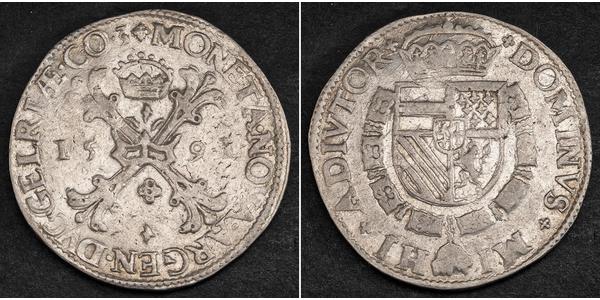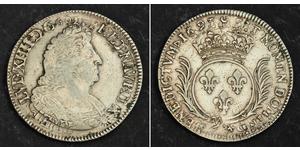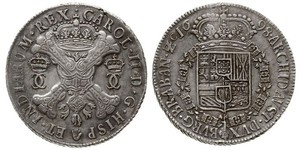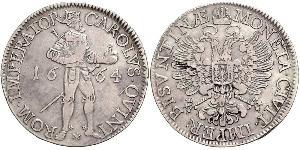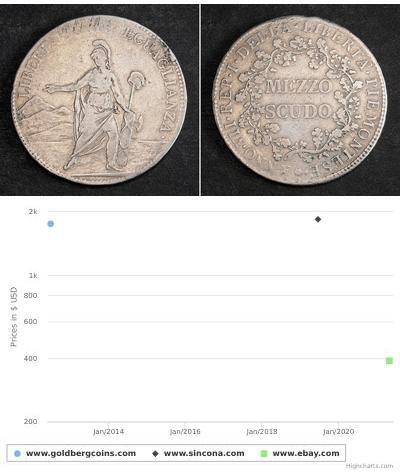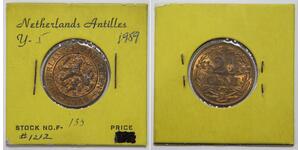(sold for $219.0)
1591, Habsburg Netherlands, Guelders. Silver Burgundian Thaler (Rijksdaalder) Coin. R!
Mint Year: 1541 Condition: VF-XF! Ruler: Emperor Philip II of Spain. Reference: Delmonte 803, Davenport 8500. R! State: Duchy of Guelders (Gelderland, Netherlands) Denomination: Kruis Rijksdaalder (Burgundian Thaler) Weight: 28.59gm Diameter: 40mm Material: Silver
Obverse: Imperial crown above nimate double-headed eagle within inner circle. Legend: KAROLVS x D x G x RO x IMP x Z x HISP x REX x 1541
Reverse: Crown above burgundian cross (cross of St. Andrew). Date (15-91) split at sides. Legend: + MONETA . NOVA . ARGEN . DVC . GELRIAE . CO . 3
Habsburg Netherlands (Dutch: Habsburgse Nederlanden; French: Pays-Bas des Habsbourg), in Latin referred to as Belgica, is the collective name of Renaissance period fiefs in the Low Countries held by the Holy Roman Empire's House of Habsburg. The rule began in 1482, when the last Valois-Burgundy ruler of the Netherlands, Mary, wife of Maximilian I of Austria, died. Their grandson, Emperor Charles V, was born in the Habsburg Netherlands and made Brussels one of his capitals.
Becoming known as the Seventeen Provinces in 1549, they were held by the Spanish branch of the Habsburgs from 1556, known as the Spanish Netherlands from that time on. In 1581, in the midst of the Dutch Revolt, the Seven United Provinces seceded from the rest of this territory to form the Dutch Republic. The remaining Spanish Southern Netherlands became the Austrian Netherlands in 1714, after Austrian acquisition under the Treaty of Rastatt. Habsburg rule ended with the annexation by the revolutionary French First Republic in 1795.
Guelders or Gueldres (Dutch: Gelre, German: Geldern) is a historical county, later duchy of the Holy Roman Empire, located in the Low Countries. The term Low Countries, also known as the Low Lands (Dutch: de Lage Landen, French: les Pays-Bas) and historically called the Netherlands (Dutch: de Nederlanden), Flanders, or Belgica, refers to a coastal lowland region in northwestern Europe forming the lower basin of the Rhine–Meuse–Scheldt delta and consisting of Belgium, the Netherlands, and Luxembourg. Geographically and historically, the area includes also parts of France and Germany such as the French Flanders and the German regions of East Frisia and Cleves. During the Middle Ages, the Low Countries were divided in numerous semi-independent principalities.

|
Posted by:
anonymous 2021-03-17 |
2 1/2 Cent Netherlands
group has 18 coins / 14 prices
⇑

